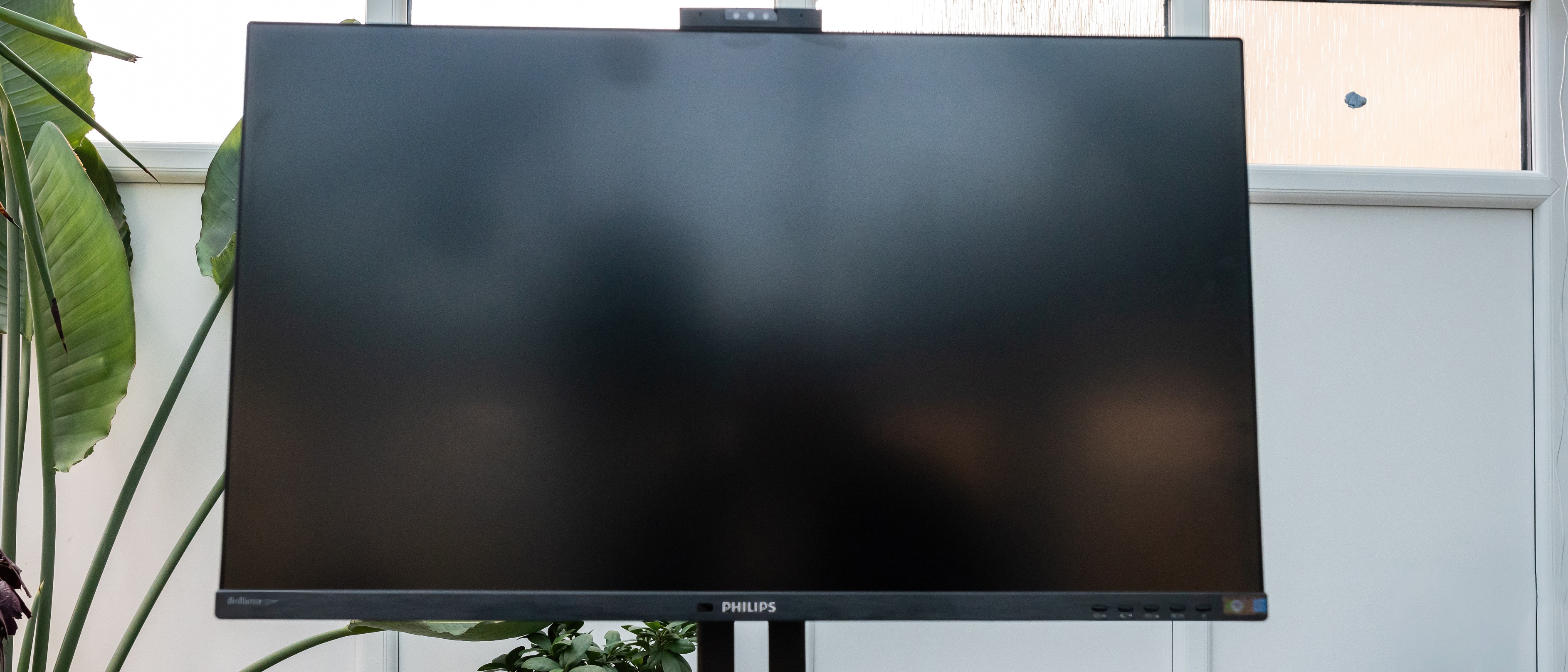Our Verdict
The Philips 329P1H is a convenient screen. It’s large, reasonably priced, connects to a MacBook via one cable, and has enough additional functionality in its hub to help keep your desk clear of cables. It’s large, bright, sharp and colourful, has a wide viewing angle, works just as well for gaming (provided you don’t want more than 60FPS) and movie-watching as it does for creative or business work. The only weak spot is its speakers, and if that sort of thing is important to you, you almost certainly have an alternative solution already.
For
- Large and colourful
- Good USB hub
- Reasonable colour accuracy
Against
- Poor speakers
- USB ports hard to reach
- Large stand footprint
Why you can trust Creative Bloq
Screen size: 31.5in
Aspect ratio: 16:9
Max refresh rate: 60Hz
Resolution: 4K, 3840x2160
Panel tech: IPS, W-LED backlight
Brightness: 350 cd/m²
Contrast ratio: 1300:1
Supported colours: 1.07 billion
Colour space coverage: NTSC 90%*, sRGB 108%*, Adobe RGB 87%*
Viewing angle: 178°/178°
Is it possible to get a monitor that’s too big? We only ask because the Philips 329P1H is quite a large screen, and will require some rethinking and replanning of your desk space if you decide to take the plunge. If you’re unconvinced, we recommend you don’t get a demo of the monitor, because after a few minutes sat in front of it you’re going to wonder how you ever coped with something smaller.
It’s not just the size, though it’s utterly imposing when sitting two feet from your face, but the whole thin-bezelled package, with its convenient USB-C connection and hub functionality, makes an immediate impression.
But does that size make it a good professional monitor? Should someone looking for the best monitor for programming or video-editing, for example, take a look at this one? And do its 4K properties cut it with the best 4K monitors out there? We strive to find out.
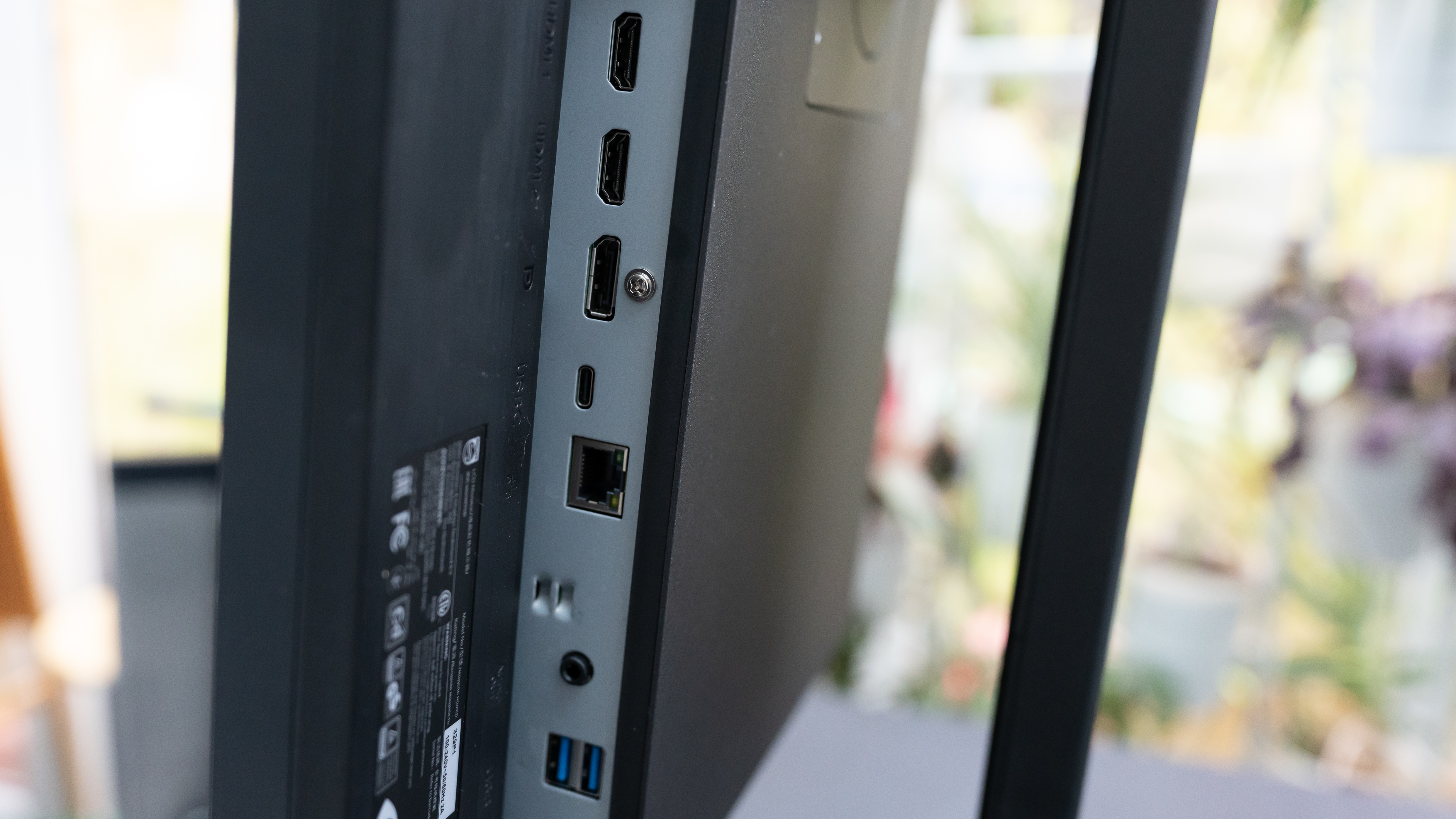
Philips 329P1H: Features
The 329P1H is a 4K screen similar to Dell’s P3222QE, cramming eight million pixels into a space the size of two pizza boxes. This is the size at which the higher resolution begins to make sense, as while 27in 4K screens are common, they might be better served by being 1440p/QHD, as this would bring the price down and reduce the GPU power required to push so many pixels 60 times a second. At 32in, however, 4K makes more sense.
A screen this large offers a lot of desktop, the ability to put two documents side-by-side without having to zoom out to the point of illegibility, and to tile four 1080p video streams without loss of clarity. It has implications for image editing, the Photoshop interface is so spread out that it can’t block your view of what you’re doing, and video editors will be similarly happy, though may prefer a 5K screen like the 27in Apple Studio Display.
The desk-dominating size means the 329P1H comes with a large stand with an equally vast footprint that connects to the VESA mount, and we had trouble fitting it onto a third-party monitor arm due to the mount being recessed into the body of the screen. As a screen like this is bulky, and you may find yourself wanting to lift it up or otherwise push it out of the way when you need a bit of spare desk, a VESA arm makes a lot of sense, so it’s a shame to see the screen can’t accommodate those with protuberances beyond the basic square.
The screen’s other claim is single-cable USB connectivity via USB-C, and it takes this about as far as is possible with an Ethernet socket capable of gigabit speeds on the back so you don’t have to rely on wifi when docked. Add to this four USB 3.1 Type-A ports, including one fast charger, audio passthrough, and the ability to charge at 65W down the USB 3.1 Gen 2 Type-C connector, and owners of recent MacBooks and Microsoft Surface machines will find a lot to like. For everybody else, the combination of DisplayPort 1.2 and a pair of HDMI 2.0 sockets gives versatile connectivity, with the USB-C port still available as a USB and networking hub input, also enabling the pop-up camera unit that’s compatible with Windows Hello.
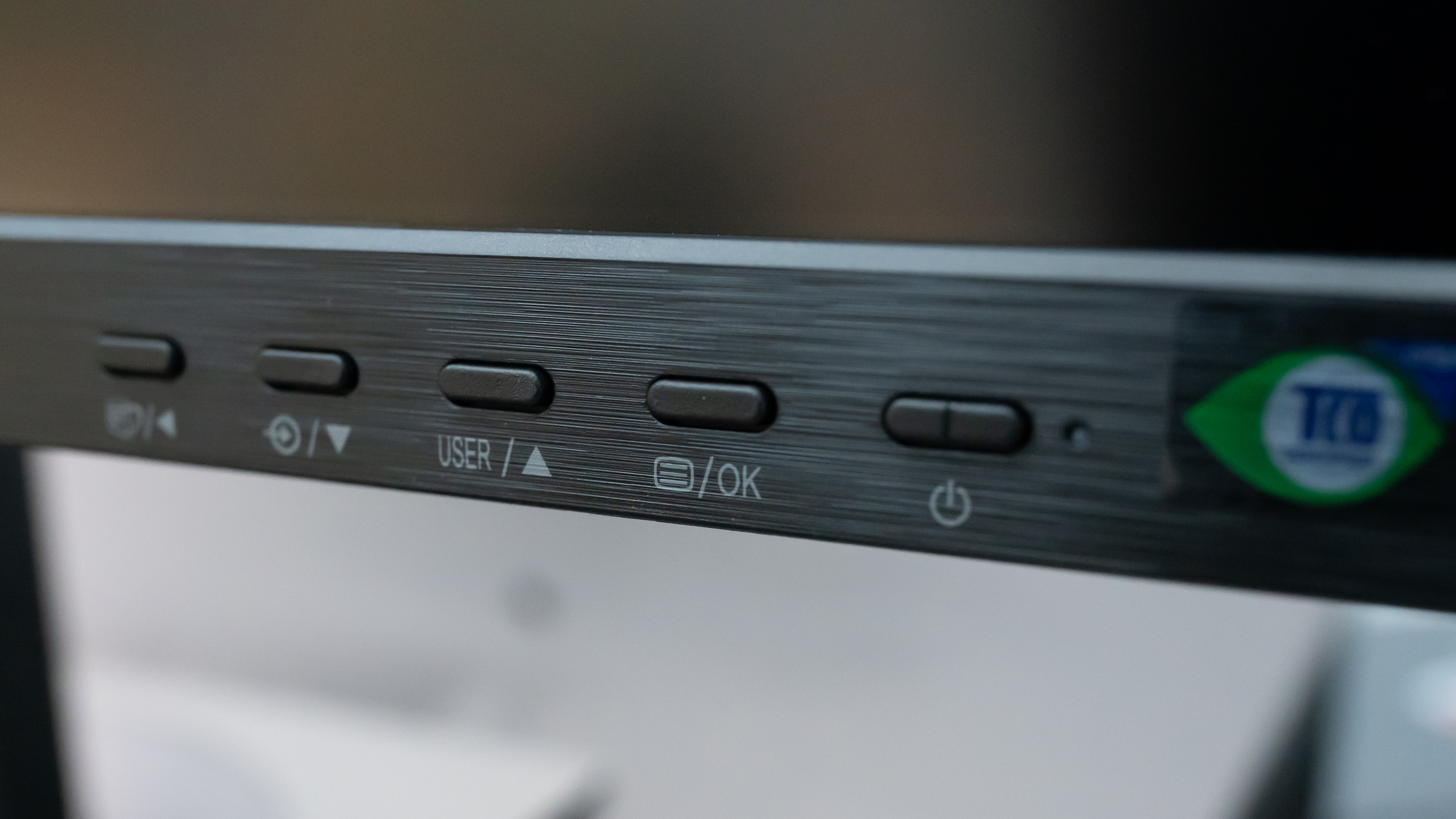
Philips 329P1H: Build and handling
The 329P1H is a large screen, though by no means the largest on the market. It’s a standard black rectangle, with no curve, and has front-facing buttons for the OSD. The camera package pops out of a recess behind the top of the screen and needs to be tilted forward to face the user, otherwise, you’ll give video call recipients a fine view of your ceiling tiles. There's no shutter, so for privacy, you’ll need to tilt it back up and then push it down into its container – this requires enough force that you can end up lowering the screen on its stand, as it slides down smoothly.
While it’s possible to pick the screen and stand up with one hand, you won’t want to be shuffling it around on your desk too much. The foot takes up a lot of space, and while it provides a stable platform that’s highly adjustable, it’s a screen that’s probably better suited to an arm, especially if used as part of a multi-monitor setup.
The USB hub is nice to have but is unfortunately hidden so far around the back of the monitor as to be almost impossible to plug into from the front. The side-mounted ports are recessed further than the fingers on our test hand could reach, and have the additional problem that only one is a fast charge port, and it’s almost impossible to hit first time. The screen swivels easily enough on its stand, but you might like to have cables in place before putting the screen in a permanent position and consider a USB extension.
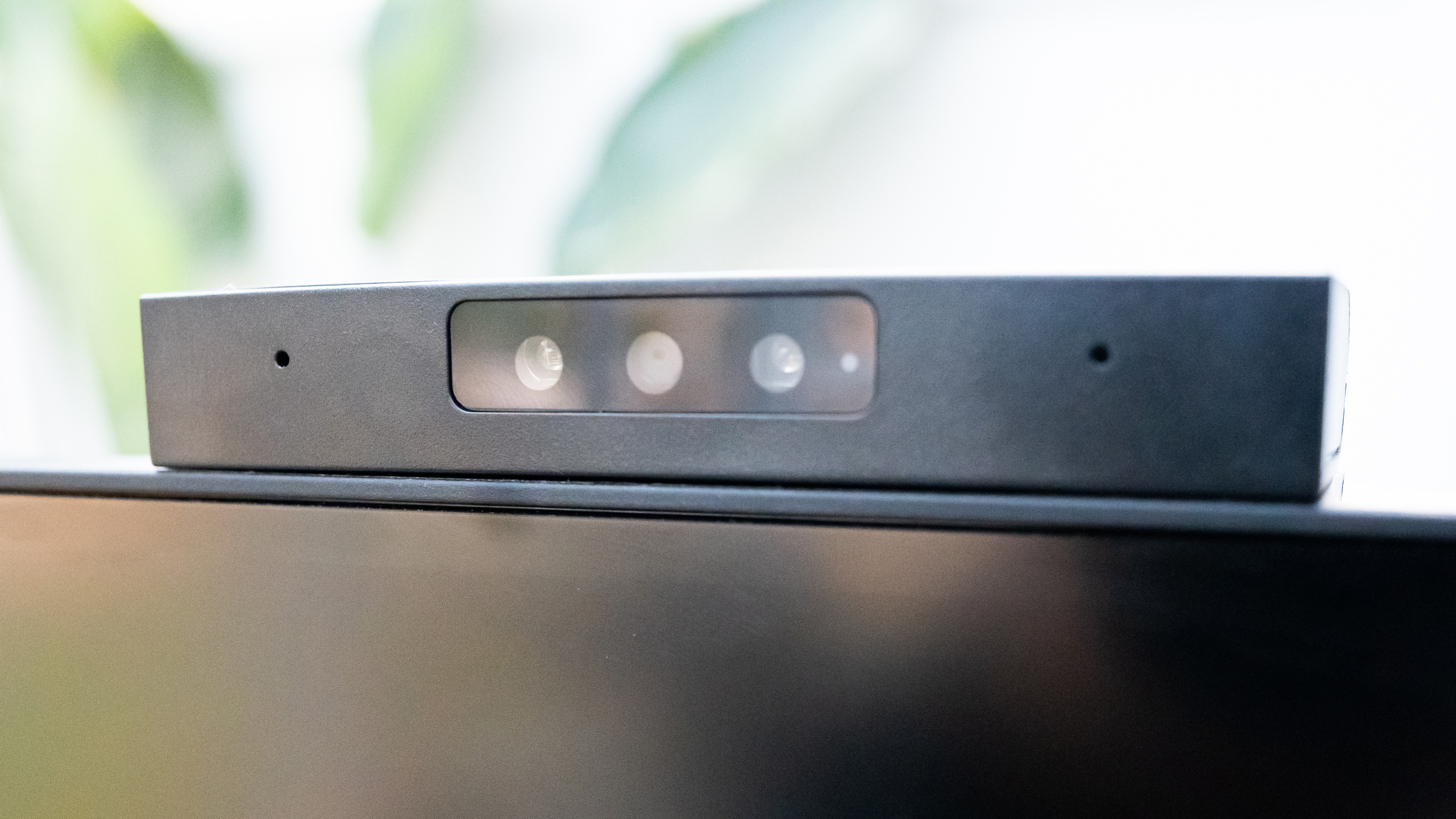
Philips 329P1H: Performance
The billion-colour gamut and 108% sRGB coverage are certainly nice to see, but it’s still a little lacking in its Adobe RGB abilities: if that’s important to you, consider the Eizo ColorEdge CG319X or Asus ProArt PA32UC-K instead, if you can afford them. For a screen that retails at anything up to an eighth of the price of those behemoths, an 87% response is reasonable for something of this size.
The colours from it are sharp and punchy, and it would make an interesting screen to put a streaming stick in the back of and pull double duty as a media player... the only letdown is a common one: the built-in speakers. They’re the usual sort of 3W afterthought, not really meant to be used for more than the alert that sounds when you get a new email.
Much better is the OSD, which you’ll have to enter if you want to turn on features like the ambient light sensor or USB standby mode, which will keep your devices charging even when the display isn’t being used. With the front-facing buttons identical and lined up horizontally, it’s possible to kit the power switch and switch the display off while using the menu, but you quickly get used to it.
You’ll also quickly get used to the size of the thing. Moving it further away from you is one way of dealing with it, as having it too close means moving your head around to focus your attention on individual areas if it’s too close. The additional efficiency that a screen like this brings to your work should not be ignored, however – the days of minimising and maximising applications as you move between them could be over.
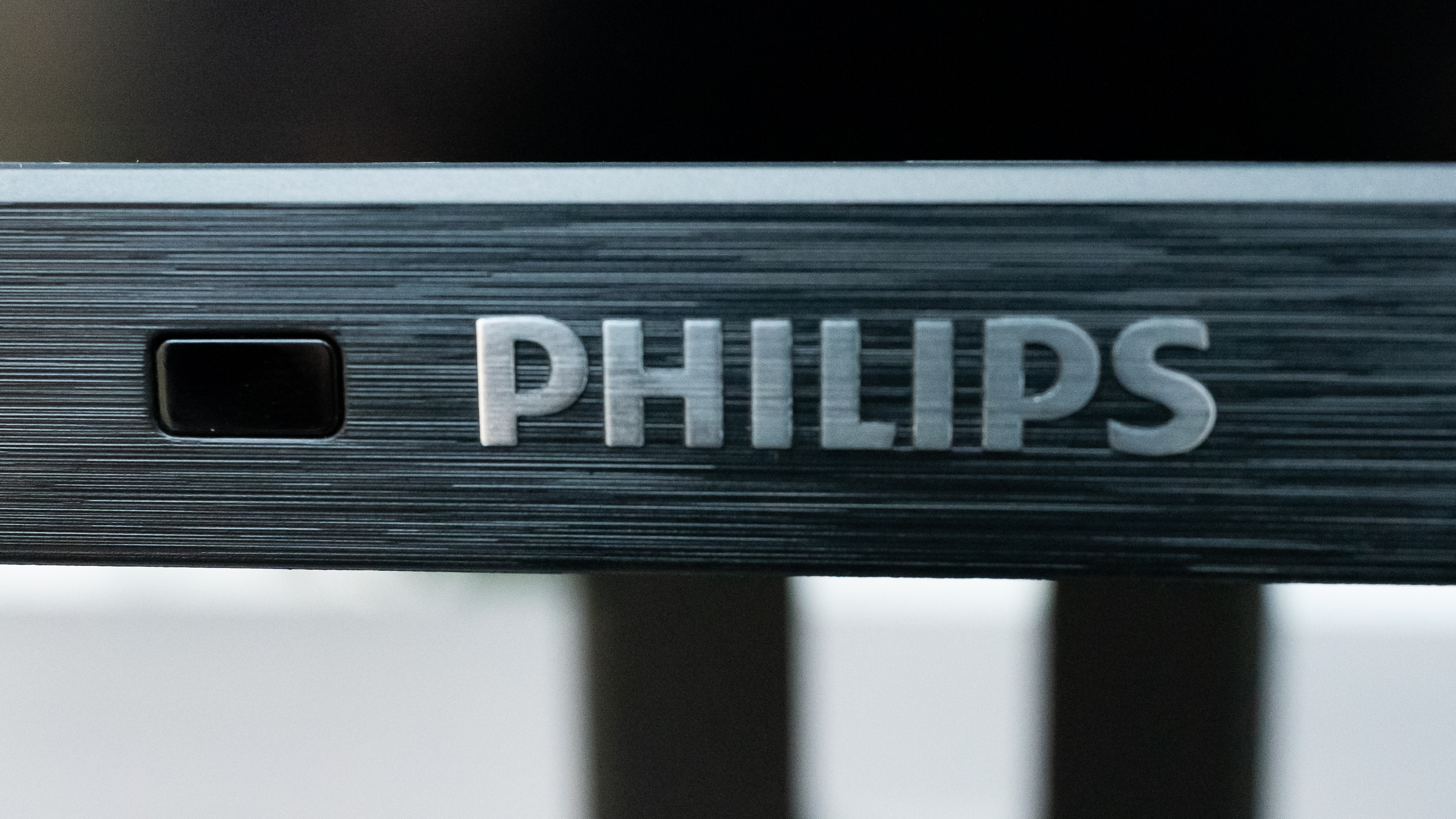
Philips 329P1H: Should you buy it?
The Philips 329P1H is a convenient screen. It’s large, reasonably priced, connects to a MacBook via one cable, and has enough additional functionality in its hub to help keep your desk clear of cables. It’s large, bright, sharp and colourful, has a wide viewing angle, works just as well for gaming (provided you don’t want more than 60FPS) and movie-watching as it does for creative or business work. The only weak spot are its speakers, and if that sort of thing is important to you, you almost certainly have an alternative solution already.
Read more:

Thank you for reading 5 articles this month* Join now for unlimited access
Enjoy your first month for just £1 / $1 / €1
*Read 5 free articles per month without a subscription

Join now for unlimited access
Try first month for just £1 / $1 / €1
out of 10
The Philips 329P1H is a convenient screen. It’s large, reasonably priced, connects to a MacBook via one cable, and has enough additional functionality in its hub to help keep your desk clear of cables. It’s large, bright, sharp and colourful, has a wide viewing angle, works just as well for gaming (provided you don’t want more than 60FPS) and movie-watching as it does for creative or business work. The only weak spot is its speakers, and if that sort of thing is important to you, you almost certainly have an alternative solution already.

Ian Evenden has been a journalist for over 20 years, starting in the days of QuarkXpress 4 and Photoshop 5. He now mainly works in Creative Cloud and Google Docs, but can always find a use for a powerful laptop or two. When not sweating over page layout or photo editing, you can find him peering at the stars or growing vegetables.
